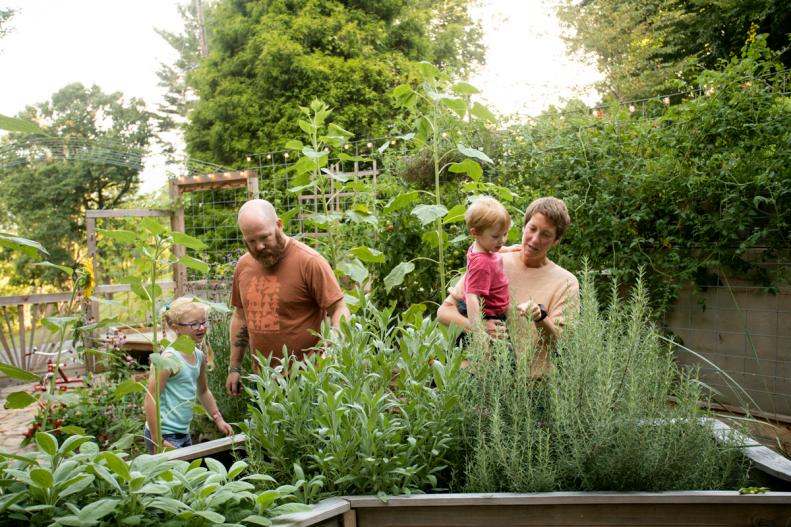Problem: No Space to Grow
At the height of the Covid-19 pandemic in 2020, travel writer and mom of two Kim Dinan felt a deep urge to plant a garden. "I had a physical desire to get my hands in the dirt," she says. She wanted a place where she could teach her kids where food comes from, and a retreat for herself, too. The trouble on their mountainside lot in western North Carolina? No flat, sunny space in which to grow.
So Kim and her husband Brian Patton looked to an underused patch of pavement for a solution. They called up local ecological design company Gardens of Eatin to draw up a design that would include the principles of permaculture, which aims for a sustainable, self-sufficient garden. As part of that, Kim and Brian committed to doing a lot of the labor themselves, including removing the expanse of paving using rented equipment and building the raised beds.









